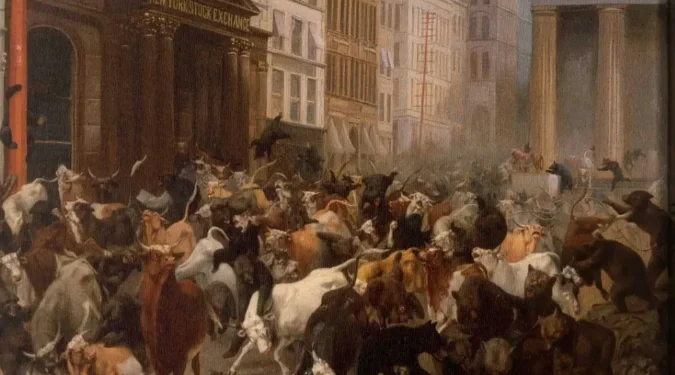“Don’t just do something, stand there!” – Jack C. Bogle, founder of Vanguard
When markets experience turbulence, as they have for the past several weeks, I’m grateful for my background as a history major (yes, I majored in history before becoming a financial planner!). Checking your investments and seeing your portfolio decline day after day can be stressful. You might even be considering taking drastic action – is now the time to sell? Should I move everything into bonds? Should I go to cash?
Having the advantage of historical context can help put these moments into perspective. Let’s take a trip down history lane and revisit just a few of the major geopolitical events the global stock market has endured and survived since 1900:
A Century of Crisis – And Market Resilience
The Panic of 1907 – A major banking crisis that caused the stock market to plunge 50% in just three weeks. The panic was so severe that J.P. Morgan himself had to intervene, personally orchestrating bailouts. This event led to the creation of the Federal Reserve in 1913.
1914 – 1918 – World War I & Spanish Flu – The stock market closed for four months after war broke out. By the end, 16 million people were dead, Europe was in ruins, and a devastating pandemic killed millions more worldwide.
1929 – 1939 – The Great Depression – The stock market declined nearly 90% over three years. The global economy remained stagnant for a decade, with U.S. unemployment peaking at 25% and millions plunged into poverty.
1939–1945 – World War II – The most devastating conflict in human history led to an estimated 70-85 million deaths. While the war ended in 1945, peace was short-lived as the Cold War soon followed.
1962 – Cuban Missile Crisis – The world held its breath as the U.S. and Soviet Union teetered on the brink of nuclear war. A single misstep could have meant global catastrophe.
1971 – The End of the Gold Standard – The ‘Nixon Shock’ severed the U.S. dollar’s tie to gold, reshaping the global financial system overnight and leading to economic uncertainty.
1973–1974 – Oil Embargo & Stagflation – The OPEC oil embargo against the U.S. caused oil prices to quadruple, sparking skyrocketing inflation and economic stagnation.
1987 – Black Monday – On October 19, the Dow plunged nearly 23% in a single day—one of the largest one-day crashes in history.
2000 – 2002 – Dot-Com Crash – By October 2002, the NASDAQ had fallen 78% from its peak as overvalued tech stocks collapsed.
2001 – 9/11 Attacks – The attacks on the World Trade Center and Pentagon killed nearly 3,000 people, launching the global War on Terror and reshaping global security policies.
2008 – The Global Financial Crisis – A financial meltdown triggered by the housing market collapse pushed the global economy to the brink. Governments worldwide spent hundreds of billions bailing out financial institutions to prevent economic collapse.
2011 – U.S. Debt Ceiling Crisis – For the first time in history, the U.S. government had its credit rating downgraded, fueling economic uncertainty.
2020 – COVID-19 Pandemic – The world shut down as the coronavirus spread, millions died, and supply chains collapsed. Governments introduced unprecedented stimulus measures to stave off further economic turmoil.
And Yet, Progress Continues
That was… a bit depressing. But of course, I’ve only listed some of the worst events of the past 120+ years.
At the same time, we’ve also achieved:
- first powered flight (1903)
- the Moon landing (1963)
- Incredible Medical breakthroughs (penicillin, vaccines, and DNA sequencing)
- Civil Rights advancements worldwide
- Dramatic reductions in global poverty
- Increased life expectancy & technological progress
So, What’s the Takeaway?
The stock market rewards patience. Volatility is the price we pay for long-term growth.
At the time of writing this, the U.S. stock market is down about 3% year-to-date amid global trade wars and international conflicts. Every crisis feels different while you’re in it. But history tells us that markets—and humanity—are remarkably resilient.
As the saying goes: “History doesn’t repeat, but it often rhymes.” The best strategy remains staying the course.
- Do I have a financial plan that aligns my investments with both my willingness and need to take risk?
- Do I have an Investment Policy Statement (IPS) to remind me why my portfolio is allocated the way it is?
- Do I have a retirement income strategy that accounts for market declines, so I know what steps to take, if any?
- If I’m not yet retired, am I taking this as an opportunity to invest more at lower prices?
Together Planning is a registered investment advisor. The information presented is for educational purposes only. It should not be considered specific investment advice, does not take into consideration your specific situation, and does not intend to make an offer or solicitation for the sale or purchase of any securities or investment strategies. Together Planning has a reasonable belief that this marketing does not include any false or material misleading information statements or omissions of facts regarding services, investments, or client experiences. Together Planning has a reasonable belief that the content will not cause an untrue or misleading implication regarding the adviser’s services, investments, or client experiences. Be sure to consult with a qualified financial advisor and/or tax professional before implementing any strategy discussed herein.

